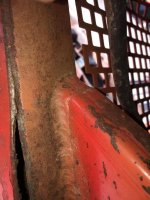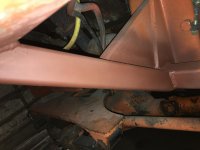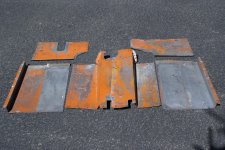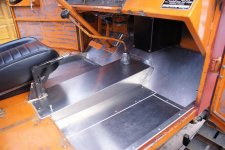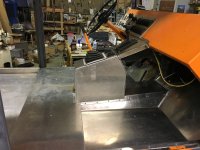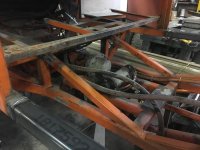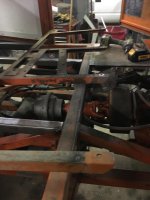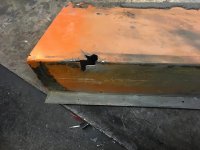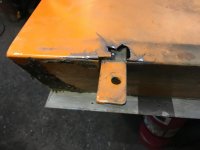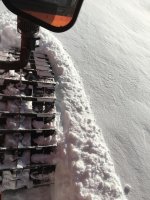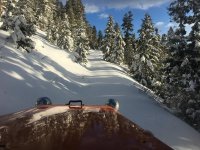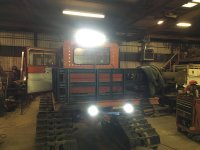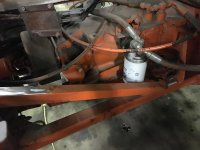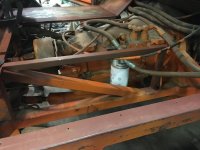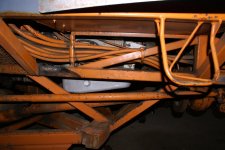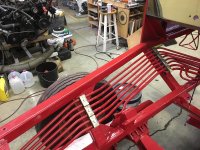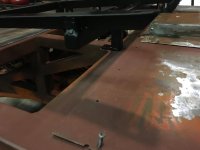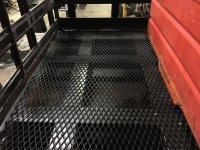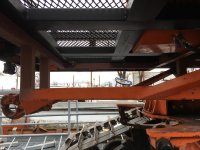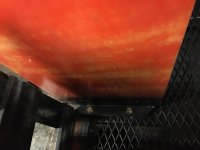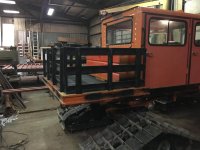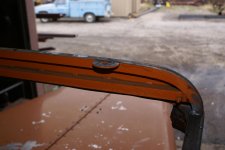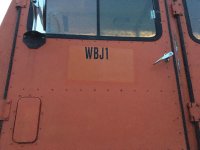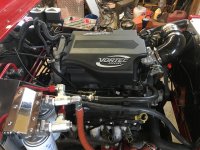To provide a thread update, Scott and I took the ignition timing information kindly provided by 1BG and OO and adjusted the timing accordingly. We also removed the butterfly plates from the velocity governor under the carburetor (essentially rendering it worthless), re-jetted the carburetor and replaced the transmission modulator. I had hoped to get some work done on the exhaust system, but my go-to exhaust guy no longer works at the shop he did for years, and of course they said they didn’t know where he was now employed. That’s disappointing as Fritz did awesome work. Finding someone with both the skill set and the desire to do the job to the best of their ability is not easy.
So the 1544 went to The Serenade as-is... and the engine continued to disappoint. I exchanged some texts with WBJ1 and I told him I was going to name the 1544 “Gutless”. Scott and I would figure out what was wrong with the engine, or it was history. Then the name would change yet again to “Gutless No More”. We decided to start the process by running a compression check on the engine. And…problems right from the get-go. Cylinders 1-6 were all between 120 and 125 PSI. That’s great, but number eight was only 105, and seven was much worse at 60. Uh-oh, that’s not good!
We are both big-time fans of fuel injection. Yes, a properly adjusted carburetor works well, but fuel injection offers a lot of advantages. Ultimately this machine will be sold, and we had planned on installing aftermarket fuel injection on the 360 engine; most probably the Holley Sniper setup. It’s a throttle body system, not cheap, and if you want to incorporate the ability to control ignition timing it’s even more expensive. I’ve read various articles on the swap with before and after results. It really doesn’t give you any more power; it improves engine starting and drivability. While the Sniper system is a big step up, we’d be spending a chunk of money and not gaining any additional power. And now, with a major engine issue to resolve, the cost of going that route is even higher.
Plan B was replacing the Chrysler 360 Industrial with a GM LS series engine in a manner very similar to Snowzilla. After a fair amount of discussion over the last few days we've decided to go with Plan B. It’s not cheap, it’s not fast, and it’s not easy; but the result will be a significant step up in power, easier starting and a smoother running engine. The swapped system will have an OBDII port to attach an engine scanner for trouble codes - just like on a modern car or truck.
If you think about it, a carburetor's function is to meter fuel to the engine in a manner that makes the engine run well, which means the air-fuel mixture needs to be very close to the 14.7:1 stoichiometric ratio. That sounds relatively simple, and if your vehicle stayed at the same elevation and temperature, it would work pretty well. However, snowcat usage very frequently involves significant elevation changes and wide temperature swings. The LS engine fuel injection systems are way, way more sophisticated. They have multiple sensors; all feeding information to the engine’s computer on a continuous basis for the computer to adjust fuel delivery and ignition timing to make the engine run optimally under any conditions. A partial list of sensors includes a crankshaft position sensor, a camshaft position sensor, a mass air flow sensor, a manifold absolute pressure sensor and oxygen sensors (plural). The mass air flow sensor measures the “mass”, or density, of the air entering the engine. Air density is affected by elevation, temperature, barometric pressure and humidity. The manifold absolute pressure sensor can be thought of as a vacuum sensor measuring the vacuum inside the intake manifold; which basically tells the computer how hard the engine is working. The oxygen sensors measure the oxygen in the exhaust stream to determine if the fuel mixture is too rich, or too lean. Better information leads to better decision making, and that’s what a modern sequential multi-port fuel injection system is all about.
But the LS engine’s advantages continue on. For decades hot rodders have installed roller rocker arms and roller cams and lifters on their engines to increase performance. Those are expensive items, but the roller lifters allow camshaft lobe profiles that one simply can’t use with a camshaft designed for flat tappet lifters. The roller bearing design is also more efficient in terms of less valve train friction. The LS engines come from GM with all of those components…stock. For eons American auto manufacturers equipped their engines with stamped steel valve covers, oil pans and timing covers. And over time - they had a tendency to leak. LS engines use machined aluminum castings, which are much more costly from a manufacturing standpoint, but their increased rigidity and close tolerance machining result in virtually no leakage, and the gaskets can often be reused. (I guess for once the bean counters lost!)
There have been advances in metallurgy, improvements in casting technology, as well as in manufacturing processes. Back in the seventies and eighties, numerically controlled machine tools were starting to take off, but the machines themselves were, relatively speaking, in their infancy. The new machine tools today quite literally have capabilities that we wouldn’t have believed possible back then. The phrase “beyond our wildest dreams” is not inappropriate.
So with that (again) long-winded explanation, what’s not to like about the LS engine?
But we have two other Tuckers higher on the priority list to finish before we can get serious about yet another engine swap. At the end of the day it will make for a better machine, and that’s our overarching objective for all our projects.




